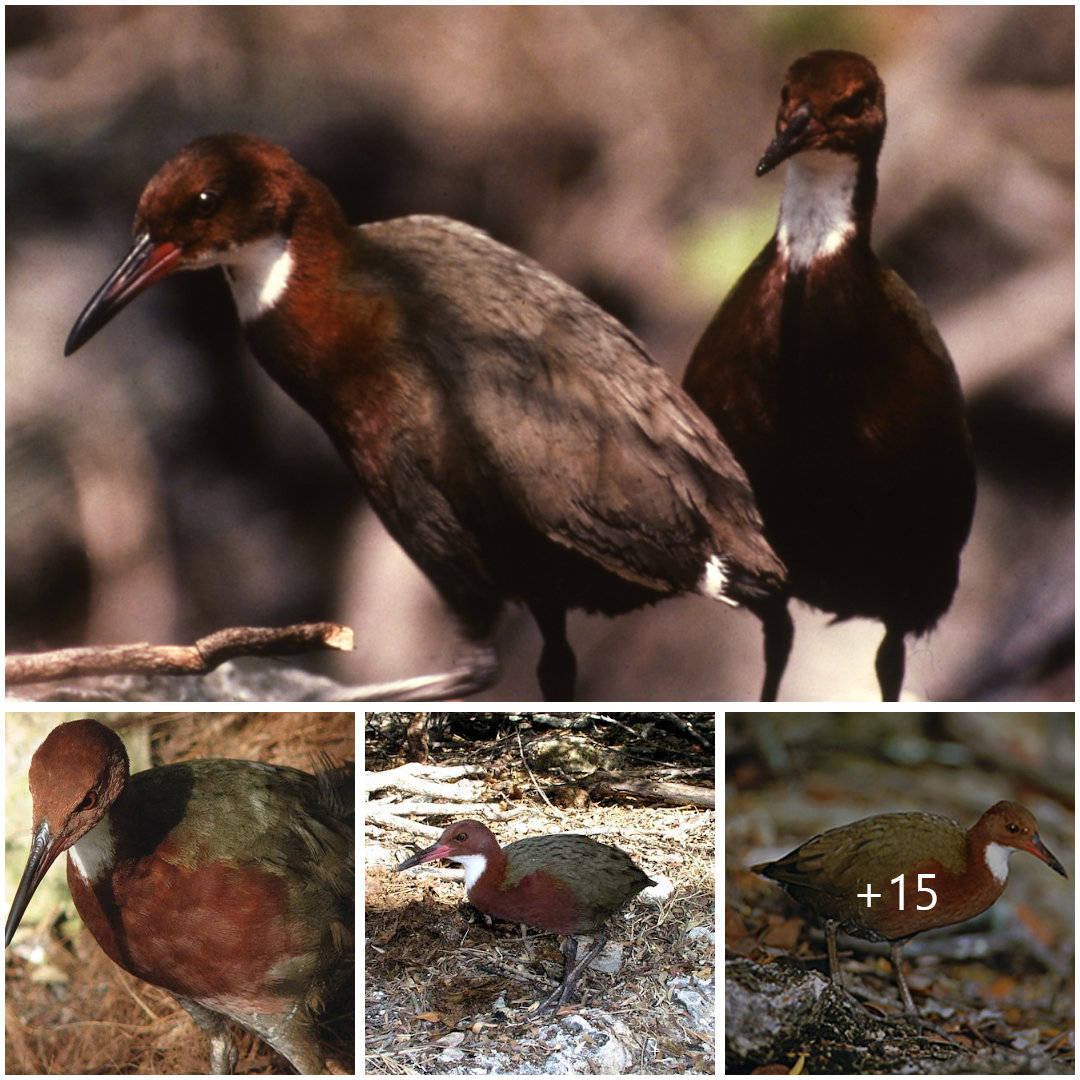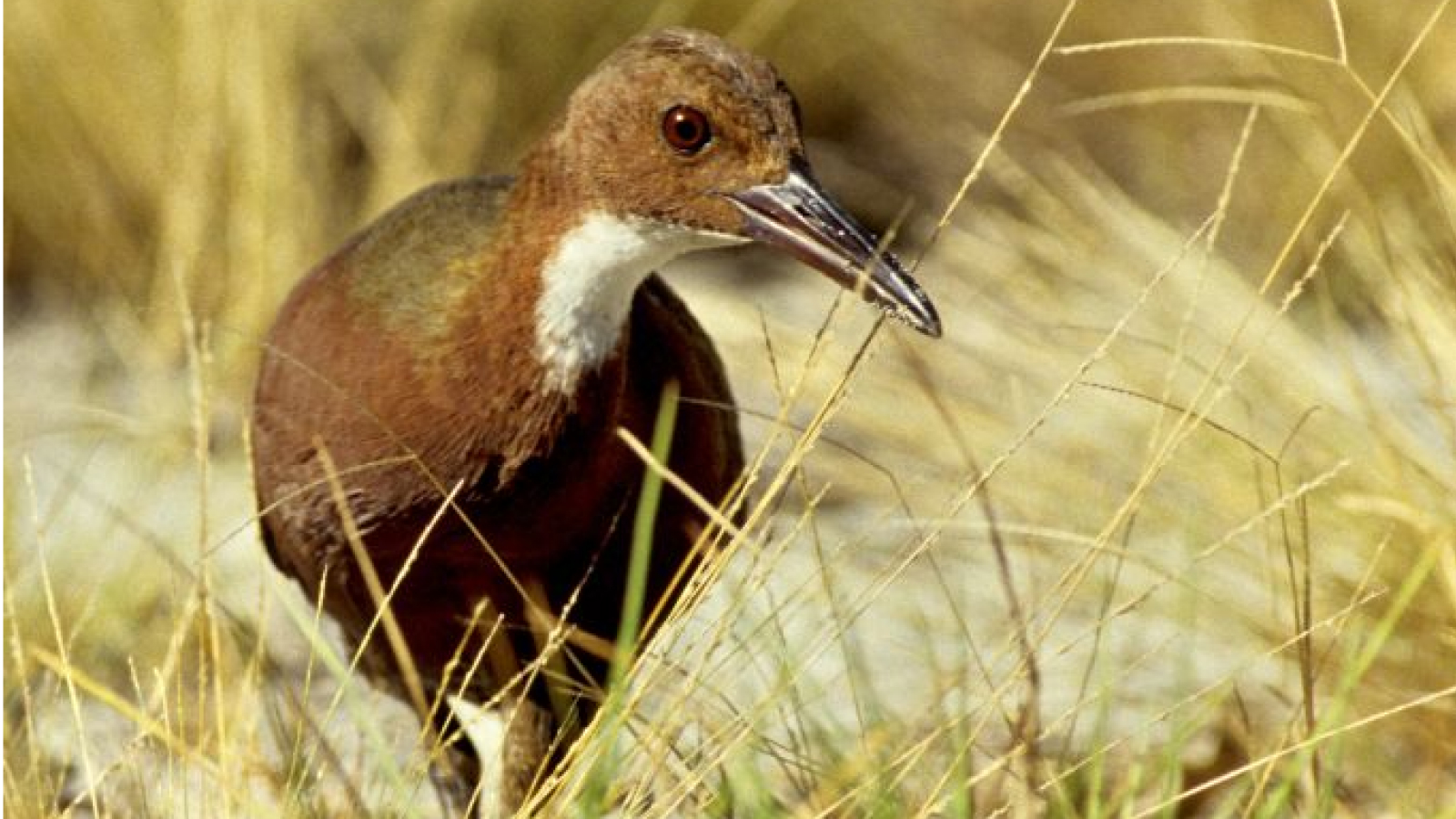

The flightless Aldabra rail went extinct over 130,000 years ago, but the species then reappeared via iterative evolution. (Image credit: Gilles MARTIN/Gamma-Rapho via Getty Images)
Name: Aldabra rail (Dryolimnas cuvieri aldabranus)
Where it lives: Aldabra — a coral atoll off the southeast coast of Africa
What it eats: Insects
Why it’s awesome: Lying off the southeast coast of Africa, north of Madagascar, the coral limestone islands of the Aldabra atoll are home to a humble yet astonishing bird that has evolved to be flightless twice.
The Aldabra rail is rather unremarkable at first glance. It’s about the size of a chicken, with a flecked gray back, a rusty red head and chest and a white throat. It is a subspecies of the white-throated rail (Dryolimnas cuvieri) and is the only living flightless bird in the Indian Ocean, thanks to human-driven extinction of birds like the dodo (Raphus cucullatus).
A 2019 study published in the Zoological Journal of the Linnean Society examined the fossil record of rails in Aldabra and found evidence of a flightless rail on the atoll from before it was submerged beneath the waves 136,000 years ago. This event caused “an almost complete turn over in the fauna,” lead author Julian Hume, a paleontologist at the Natural History Museum, London, said in a statement at the time.
This inundation, which lasted until around 118,000 years ago, resulted in the extinction of the flightless rail subspecies, but then something remarkable happened.
When the atoll resurfaced, the white-throated rail — which is able to fly — recolonized the atoll and began its evolution to become flightless once again. The researchers found that leg fossils from rails dating to around 100,000 years ago were heavier and more robust than those of white-throated rails. According to the study authors, this indicates the rails on the atoll were getting heavier and losing the ability to fly.
Related: See ‘incredible’ photos of bird that is both male and female
Flightlessness appears to be a beneficial trait in this environment. These birds lay their eggs on the ground, so having strong legs to run around straight after hatching may help them survive. “As they grow, the very last thing to develop in the rails is the pectoral muscles and the wing muscles,” Hume said.
In losing its ability to fly once again, the Aldabra rail has essentially evolved twice, rising from the dead through a process called “iterative evolution” — where a species goes extinct, but then another comes along and evolves the same traits to become near-identical to the one that was lost.
“There is no other case that I can find of this happening, where you have a record of the same species of bird becoming flightless twice,” Hume said. “It wasn’t as if it were two different species colonizing and becoming flightless. This was the very same ancestral bird.”





